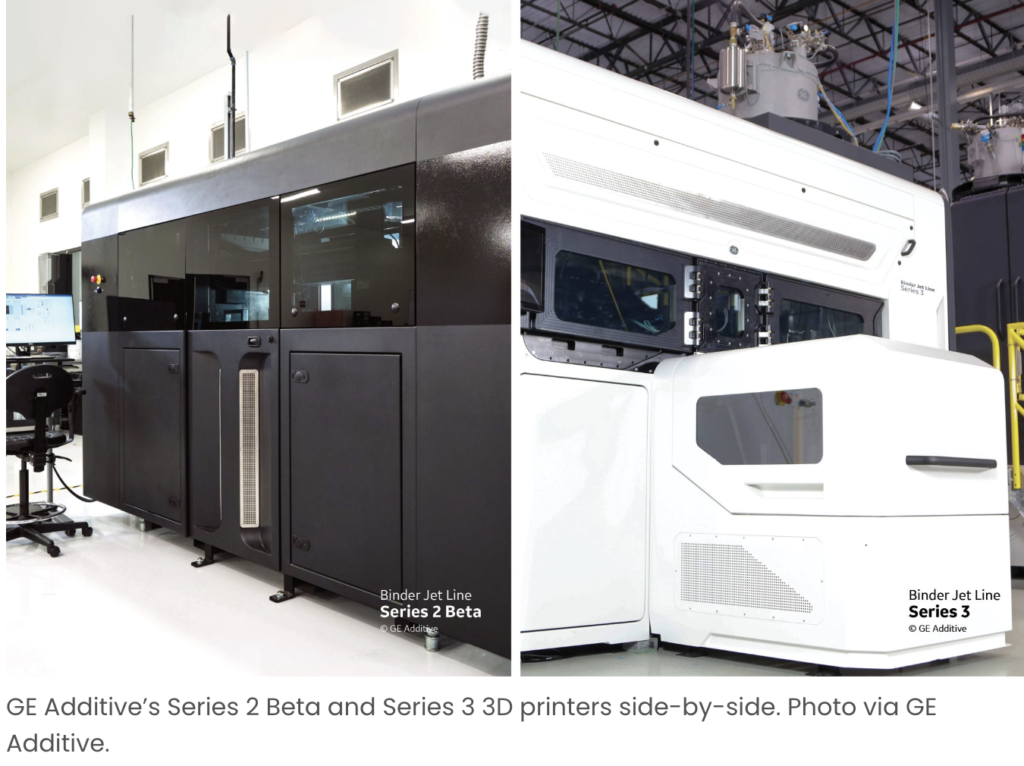
There is a quiet shift happening in workshops, garages, classrooms, and home offices all around the world. At first, it looked like a small ripple, the kind you might miss if you were not paying close attention. However, that ripple has turned into a wave strong enough to reshape how creators, small businesses, and even larger manufacturers think about production. At the center of that shift sits an unexpected hero: the modern desktop 3D printer.
For years, the divide between desktop and industrial systems seemed almost impossible to cross. Industrial machines owned the realms of speed, precision, and long-term durability, while desktop units were often treated as hobby tools—fun, useful, but ultimately limited. Yet something remarkable has changed. With each new generation of hardware and software, desktop printers are closing the gap, making it harder to justify spending tens or even hundreds of thousands of dollars when a machine at a fraction of the cost now delivers surprisingly competitive results.
As you look closer, the line between what is “professional” and what is “desktop” begins to blur. If you want to see how far the technology has come, you can explore some of the beginner and intermediate content at 3D Printing by Kevin, where the journey from hobby to real-world production is on full display.
The Evolution No One Saw Coming
When early consumer printers appeared, most people assumed the innovation curve would flatten quickly. They pictured a short burst of excitement followed by a long plateau. However, the opposite happened. Each year, new companies rose, new engineering breakthroughs emerged, and previously premium features became standard on machines you can now fit on a desk.
Suddenly, CoreXY motion systems started appearing in compact frames. Filament runout detection, automatic bed leveling, input shaping, better cooling, and quieter stepper drivers stopped being luxuries and instead became expected features. As those capabilities trickled down, desktop machines transformed from simple hobby gadgets into serious tools that could support both creative experiments and real-world work.
Because of this, small shops began relying on desktop printers. Classrooms began teaching with them. Designers started using them to create functional, end-use parts. Eventually, even large companies began using desktop printers for quick-turn prototypes because the results were good enough—and often fast enough—to replace more traditional, slower workflows. If you want a taste of how 3D printing is already influencing everyday life, you can read more on How 3D Printing Is Quietly Disrupting Your Daily Life at 3DPrintingByKevin.com.
Speed Is No Longer a Barrier
For a long time, industrial printers had one indisputable advantage: speed. They printed faster, finished cleaner, and handled complex geometries with ease. Desktop printers, on the other hand, were known for slow prints, frequent tuning, and long overnight jobs. However, the rise of input shaping, resonance compensation, and high-flow hotends completely changed the equation.
Today’s leading desktop printers routinely reach print speeds that would have shocked the industry just a few years ago, and they can do it while maintaining surprising levels of accuracy. When you combine that speed with filament options engineered for strength and durability, the conversation shifts. Now, in many cases, the difference between an industrial prototype that arrives in three days and a desktop-printed part that finishes in four hours is enough to transform how fast a business can operate.
The moment you can iterate faster, you can innovate faster. In manufacturing, design, and product development, that speed of iteration is often the true competitive advantage. You can brainstorm a concept in the morning, print it by lunchtime, test it in the afternoon, and refine it overnight. That cycle used to belong almost exclusively to high-budget industrial setups. Now, it belongs to anyone with a well-tuned desktop printer and a clear idea.
Material Science Has Leveled the Playing Field
Another major misconception surrounding desktop 3D printing was that smaller machines would always lag behind in material capability. Industrial systems once held a comfortable lead in terms of engineering-grade plastics and advanced composites. However, the rapid progress in filament engineering has made that assumption feel outdated.
Modern PLA formulas rival older ABS blends in strength and temperature resistance. PETG variants handle outdoor conditions, moderate heat, and daily use with confidence. Nylon blends bring the toughness required for gears, hinges, and mechanical components. With carbon fiber, glass fiber, and other reinforced filaments, desktop printers now reach deep into the territory of industrial performance, especially for low-volume production and functional prototypes.
Even more impressive is how accessible these materials have become. A machine sitting on a small desk can now print components that stand up to real-world stress tests, environmental challenges, and repetitive motion. Because of this, the question has shifted from “Can a desktop printer do it?” to “Which desktop material is best for this job?” If you are exploring different material types and want a beginner-friendly explanation, the article on the different types of 3D printers and setups at 3DPrintingByKevin.com is a helpful place to start.
Precision Keeps Improving in the Background
Walk into any machine shop and you will notice one core belief: precision is everything. A part that is a fraction of a millimeter off can quickly become scrap. Industrial printers built their reputations on tight tolerances and predictable performance, while early desktop printers were notorious for quirks, inconsistencies, and a constant need for calibration.
Modern desktop systems rewrite that narrative. Improved motion systems dramatically reduce vibration and backlash. Better firmware intelligence reduces artifacts like ringing and ghosting. Hardened nozzles maintain dimensional accuracy across hundreds of printing hours. Enclosures stabilize temperatures and keep drafts from interfering with prints. Meanwhile, slicer software—once clunky and limited—now rivals many high-end industrial tools in terms of control, previewing, and optimization.
What truly stands out is consistency. Consistency is what turns a tool into something you can trust. When a desktop machine can deliver repeatable accuracy print after print, it becomes more than a hobby device. It becomes part of a business workflow, capable of producing fixtures, jigs, functional prototypes, or even low-volume production parts.
The Affordability Advantage No One Can Ignore
The most obvious difference between desktop and industrial printers has always been price. Industrial systems traditionally cost anywhere from tens of thousands to hundreds of thousands of dollars. They are impressive and powerful, but they are built for organizations with generous budgets and high-volume, specialized needs.
Modern desktop printers push the financial argument in a different direction. You can now buy a well-built, high-speed, feature-rich 3D printer with advanced motion control, reliable automatic leveling, and support for strong functional materials at a fraction of the cost of a traditional industrial machine. For many creators, educators, and small businesses, the opportunity cost of not having a desktop printer has become higher than the price of adding one to their workflow.
This shift is especially powerful for small and mid-sized companies. Instead of outsourcing every prototype and waiting days for delivery, a team can bring substantial manufacturing capability in-house. Instead of guessing how a part will feel in the hand, they can print it the same day. Instead of delaying product improvements, they can test revisions in a single afternoon.
Desktop vs Industrial: A Quick Comparison
To see how tightly desktop printers are closing the gap, it helps to compare them side by side. While every brand and model is different, the overall trends are hard to miss.
| Factor | Modern Desktop 3D Printer | Industrial 3D Printer |
|---|---|---|
| Upfront Cost | Typically under $1,500 to $5,000 for advanced setups | Often $20,000 to $250,000 or more |
| Footprint | Fits on a desk or small workbench | Requires dedicated floor space and infrastructure |
| Speed | High-speed modes with input shaping; suitable for rapid prototypes and small runs | Optimized for continuous production and larger volumes |
| Materials | PLA, PETG, ABS-like blends, nylon, carbon fiber-reinforced filaments | Engineering-grade polymers, resins, metals, and specialized composites |
| Precision | Sub-millimeter accuracy with proper calibration and quality hardware | Very tight tolerances designed for demanding applications |
| Maintenance | User-serviceable with readily available parts and community support | Requires specialized service contracts and trained technicians |
| Best Use Cases | Rapid prototyping, fixtures, end-use parts in low volumes, education, small business | High-volume production, regulated industries, highly specialized engineering |
When you view them this way, it becomes clear that the desktop category is no longer a distant underdog. Instead, it is a practical, capable option that covers a surprisingly large portion of real-world use cases. The choice is no longer “hobby versus professional.” It is now a question of scale, regulation, and specific application.
Why This Shift Matters for the Future of Manufacturing
When tools that used to cost tens of thousands of dollars become available to almost anyone, innovation accelerates. New creators enter the field. New products appear in the marketplace. New businesses emerge in basements, spare rooms, and local shops. This shift does not just democratize manufacturing; it gradually reshapes it.
The moment a creator gains access to fast, reliable prototyping, new ideas stop living only in notebooks or on screens. They become physical objects that can be held, tested, refined, and improved. And the faster an idea becomes real, the sooner it can be validated, pitched, and launched. That is the real story behind the shrinking gap between desktop and industrial systems.
Desktop printers are not only catching up to industrial systems; they are enabling a new era of decentralized production, where creativity is no longer bottlenecked by the cost of entry. If you want to explore this transformation in more detail, you can dive deeper into topics like 3D printing versus injection molding and other real-world comparisons over at 3DPrintingByKevin.com.
Where Desktop Printing Goes from Here
If current trends continue, the gap between desktop and industrial systems will keep shrinking. We are already seeing more automation, smarter print recovery, better multi-material capabilities, and more robust quality-of-life features. At the same time, firmware and slicers are leaning into smarter defaults, profiles, and optimization tools that help beginners achieve professional-looking results more quickly.
Each new advancement multiplies the value of existing hardware. A firmware update can unlock faster speeds. A new slicer feature can improve overhang quality without changing the printer itself. A better profile can suddenly make a tricky filament behave like a familiar one. As these improvements stack, desktop printers move even closer to the performance envelope once reserved for industrial machines.
Final Thoughts
Industrial systems still dominate when it comes to large-scale production, regulated environments, and highly specialized materials. However, the gap is no longer as wide as it once was. Desktop printers are no longer entry-level toys. They are serious, capable machines that empower creators to do far more than just experiment.
As technology continues to evolve, the difference between desktop and industrial systems becomes less about raw capability and more about the specific needs of a project. The future of manufacturing is not locked inside distant facilities anymore. Surprisingly, it might be sitting on a desk right now, humming quietly, building the next great idea layer by layer.

